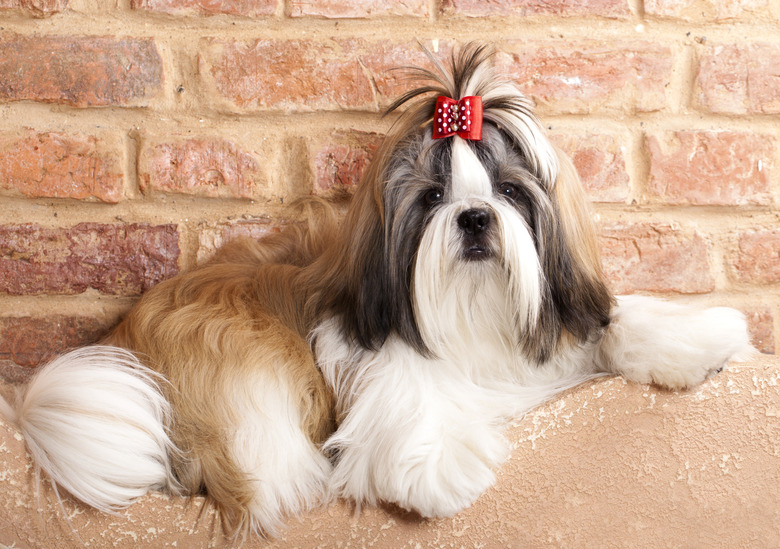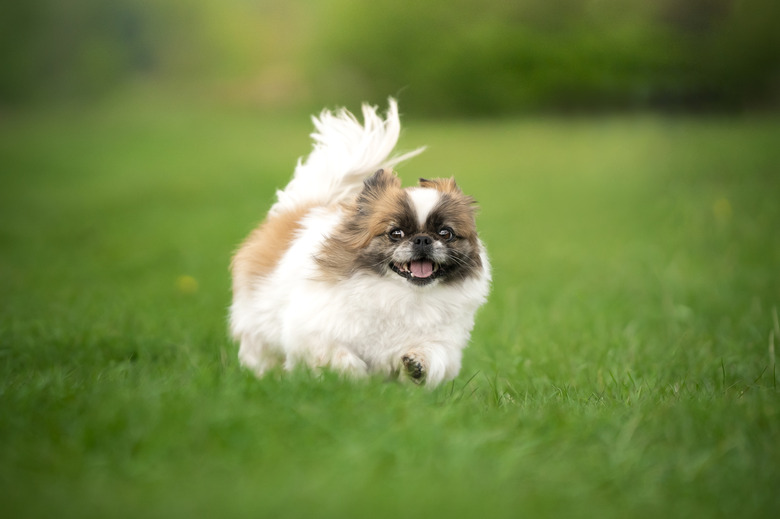Skin Cysts In Pekingese Or Shih Tzu Dogs
Pekingese and Shih Tzu health problems of lumps or cysts on the skin can be alarming to find when you're petting your pooch. Fortunately, cysts on either breed are usually — but not always — noncancerous and due to a genetic predisposition. They don't necessarily require surgical removal, but they should always be checked and monitored by your veterinarian. Take a deeper look at what the root cause might be and what your options are if you do discover an unknown lump under your pup's fur.
What is a cyst?
What is a cyst?
Both Pekingese and Shih Tzu dogs require a lot of grooming, so take advantage of this opportune time to check your dog's skin for abnormal lumps or bumps. You may notice things like lumps and bumps that their hair normally covers, or you may reveal tender spots on their anatomy that you wouldn't be able to see.
A cyst is a sac that is filled with fluid, air, or other matter, such as dead skin cells or keratin. Cysts are usually not cancerous. By contrast, a tumor is not a sac but an abnormal mass of tissue or swelling that could be cancerous or not.
Both cysts and tumors can affect any part of the dog's body, including the internal organs. Pekingese are most susceptible to interdigital cysts between the toes, while Shih Tzus tend to have sebaceous cysts on the skin.
When to get veterinary help for a cyst in a dog
When to get veterinary help for a cyst in a dog
Your veterinarian has the equipment to determine whether those bumps on a Shih Tzu's back or a Pekingese's toes are a cause for concern. While some veterinarians may choose to utilize ultrasound for a better look at the cyst, most veterinarians will manually check the cyst and assess it for uniformity — a sign that it's not cancerous — or whether it has solid areas that would be cause for concern. If the cyst is uniform throughout and on the surface of the skin and it's not bothering your pet, your veterinarian might recommend keeping an eye on it for the time being.
Return for visits if new lumps appear or to have it checked for size to ensure it's not getting larger. Also, if you observe ooze or crusting or if new bumps appear around the original site, you might want to go back for another visit. Your veterinarian may perform a biopsy, meaning they will aspirate the cyst with a needle or make a small incision to remove a chunk and look at the contents using a microscope. If the lump is bothersome, they might also just remove the entire cyst under general anesthesia and send it for a histopathology exam. Depending on the results, your veterinarian will discuss treatment options for optimal dog health.
Causes of sebaceous cysts in a Shih Tzu
Causes of sebaceous cysts in a Shih Tzu
Sebaceous cysts on Shih Tzu skin are a type of cyst usually due to blocked hair follicles, oil glands, or sweat glands, causing sebum — your dog's lubricating skin oil — to build up, block, and swell the follicle. Damage to the hair follicle from pressure points, such as from a harness or from lying down, can also cause the blockage or follicular cysts.
Inflammation in the feet can cause interdigital cysts in the follicles located between your dog's toes. Pekingese are especially prone to these because of their wide paws, which splay out and put weight on the haired skin between the toe pads.
Preventing cysts in dogs
Preventing cysts in dogs
Preventing cysts is not really possible; instead, if your dog develops cysts, there are ways you can care for your dog so that the cysts cause as little pain or inconvenience as possible. Groom your dog carefully so you don't inadvertently tear a cyst or other skin lump and cause an abscess. Take note of any abnormal skin conditions and consult with your veterinarian. Observe your dog for signs of interdigital cysts. The first symptoms often include limping, chewing on a front paw, or frequent licking.
Look between the toe pads for a red lump and feel beneath the hair for any bumpiness or nodules. Besides cysts and tumors, there are other causes of skin lumps, such as warts, insect bites or stings, pimples, lesions, allergic reactions to drugs or injections, dermatitis, or canine acne.
The bottom line
The bottom line
Skin cysts can be quite common on both Shih Tzus and Pekingese dogs, and most often, they are benign and noncancerous. However, if you suspect or fear that cysts on your dog's body might be something else, like a tumor, a trip to your DVM is the right step for diagnosing and determining whether the issue is simply cosmetic or a benign tumor rather than something more serious.


